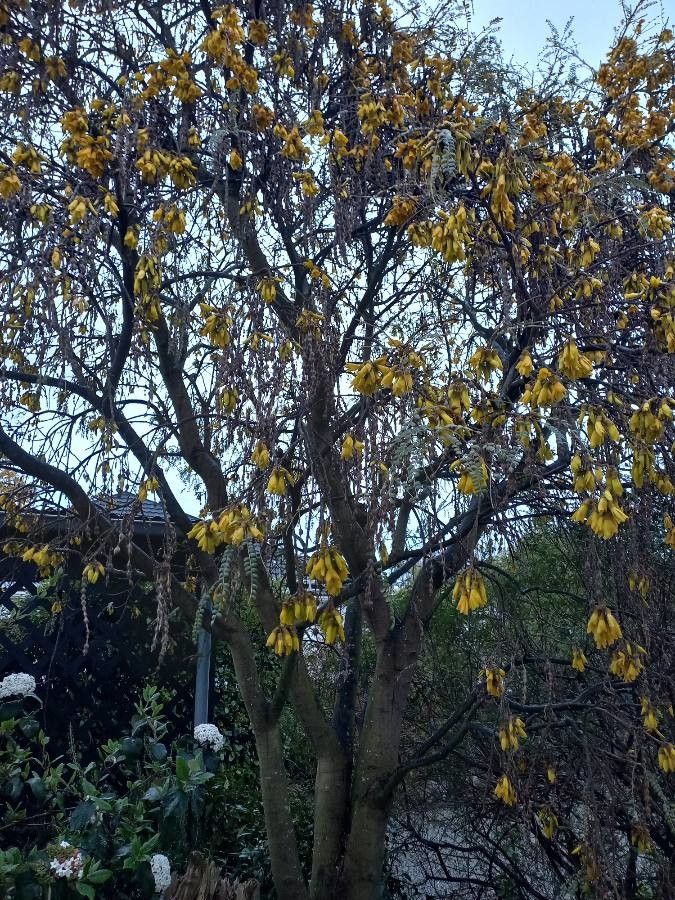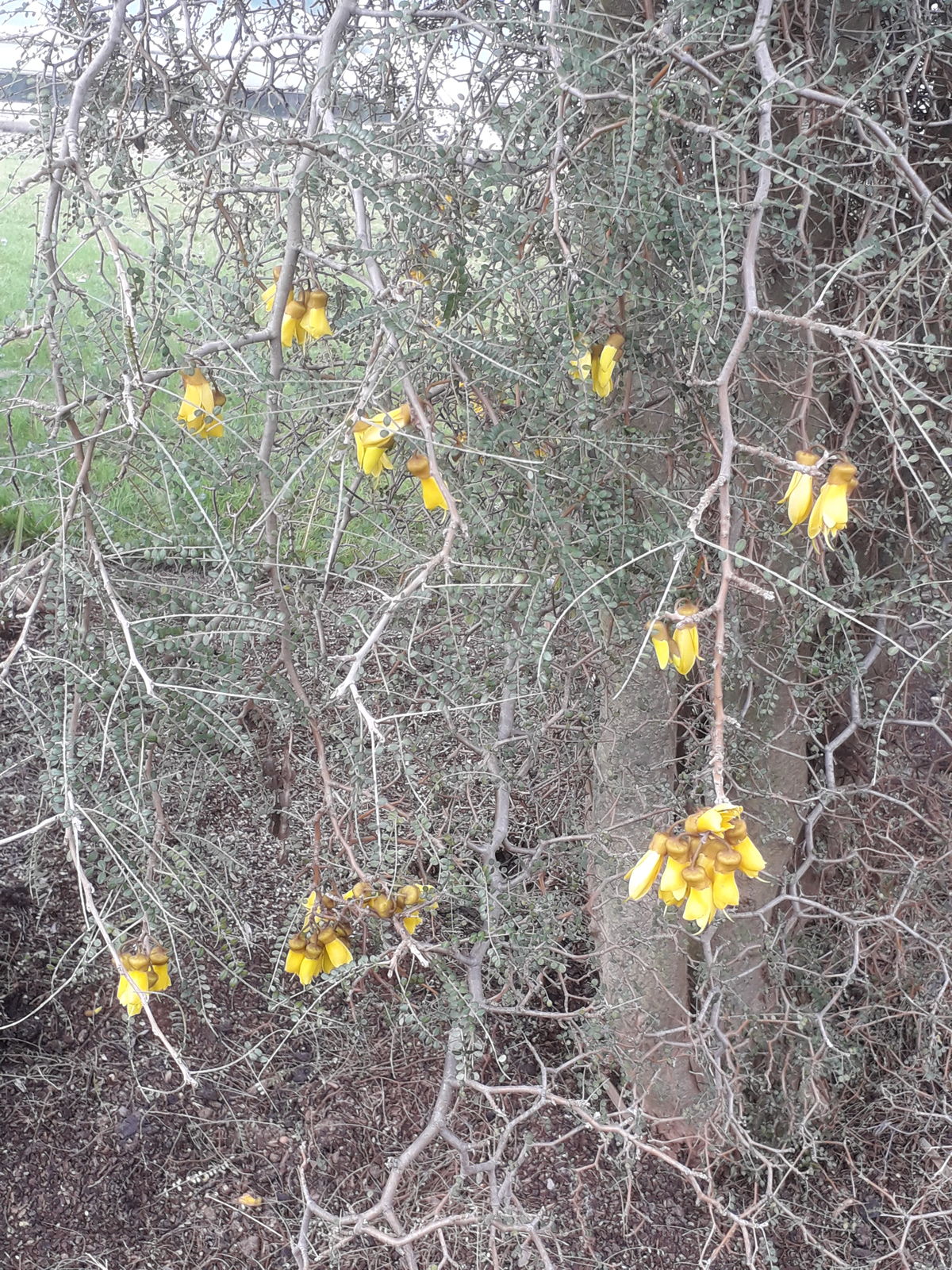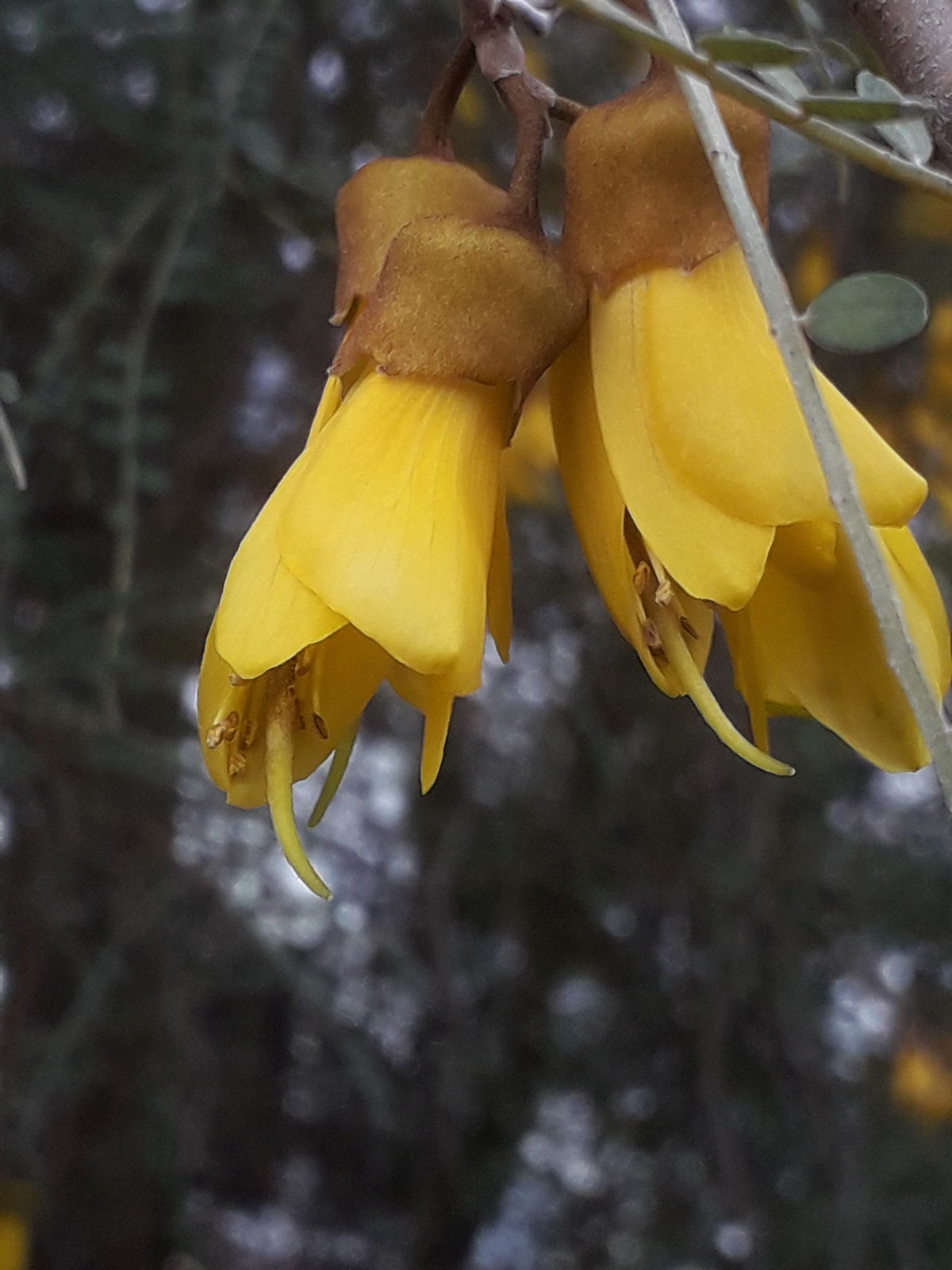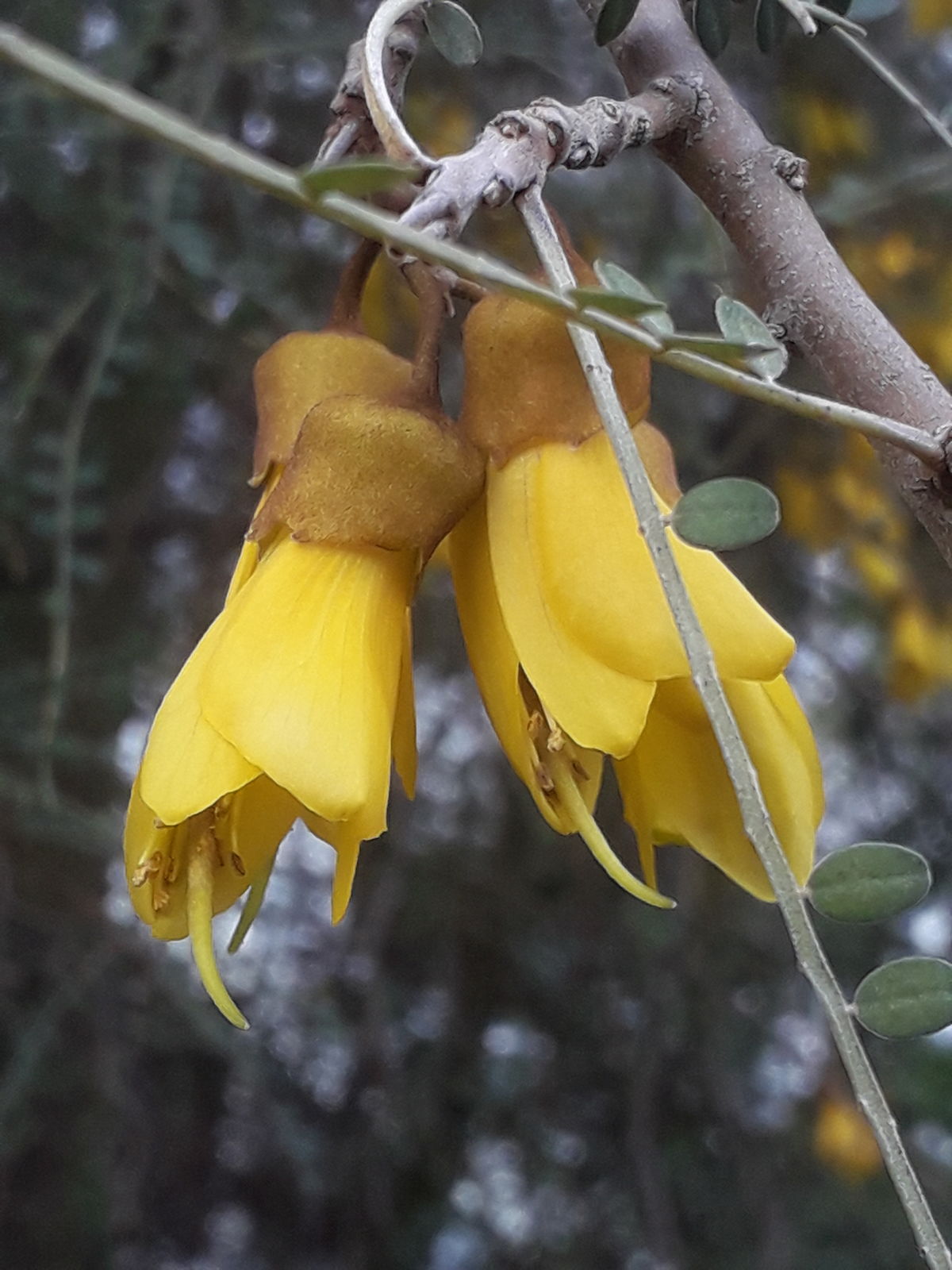Kowhai
sophora microphylla
Also known as: ["New Zealand Kowhai","Small-leaved Kowhai"]
Overview
A deciduous tree native to New Zealand, known for its vibrant yellow flowers that bloom in spring.
Benefits & Perks
["long-flowering","wildlife attractant (bees, butterflies, birds)","fragrant flowers","seasonal color change"]
Botanical Classification
| Phylum: | Magnoliophyta |
| Class: | Magnoliopsida |
| Order: | Fabales |
| Family: | Fabaceae |
| Genus: | Sophora |
| Botanical Name: | Sophora microphylla |
Plant Characteristics
Basic Information
- Category: Trees
- Suitable Location: outdoor garden in a sheltered spot, or large container
- Suitable For:
- Is Weed: No
- Allergenicity: low
Environmental Needs
- Climate: {"temperatureRange":"5–30°C"}
- Hardiness: {"zones":"8–11"}
- Misting: rarely required, only if ambient humidity is very low
- Drainage: Fast-draining to prevent root rot.
- Soil Type: Well-draining, loamy soil with added organic matter; tolerates poor soils.
Maintenance Level
- Maintenance Level: moderate
- Toughness Level: moderate
- Pruning Frequency: Annually in late winter or early spring before new growth starts.
- Pruning Intensity: Moderate; remove up to one-third of old growth if needed.
Care Details
Ideal Sunlight Coverage:
Full sun to partial shade; 6–8 hours of direct sunlight per day, with some afternoon shade in hot climates.
Sunlight Tolerance Tips:
Acclimate plants gradually to intense sunlight; protect from harsh midday sun; adjust placement based on seasonal light changes.
Care Requirements
Care Difficulty
moderatemoderate
Sunlight
full sun to partial shade
Use shade cloth in summer; rotate plant for even light exposure; avoid direct sun on leaves during peak hours.
Watering
every 7–10 days during active growth, reduce in winter
Water thoroughly but infrequently; ensure good drainage; avoid wetting foliage.
Soil
well-draining, loamy soil with some organic matter
pH: Slightly acidic to neutral (pH 6.0–7.0).
Ensure good drainage; amend with organic matter; avoid waterlogged soil.
Temperature
Hardy in USDA zones 7–9; prefers temperatures between 50–75°F (10–24°C); tolerates mild frosts.
Protect from frost; provide shade in summer; maintain consistent temperatures for optimal growth.
Fertilizing
every 4–6 weeks during spring and summer
Fertilize lightly; apply before new growth appears; water well after fertilizing.
Propagation
Methods
Stem cuttings or seed; stem cuttings are more reliable for home growers.
Step-by-Step Propagation Guide
- Take 4–6 inch cuttings.
- Remove lower leaves.
- Dip in rooting hormone.
- Plant in medium.
- Keep moist and warm.
Best Time: Late spring or early summer when the plant is actively growing.
Environment
Warm, humid environment with indirect light; maintain consistent moisture.
Medium
Well-draining potting mix with perlite or sand; can also use a rooting hormone.
Hormone
Recommended for faster rooting.
Timeline
Roots may develop in 4–8 weeks; establish in new pot after 3–6 months.
Tools Needed
Pruning shears, rooting hormone, small pots, well-draining mix.
Quick Tips
Use healthy, non-flowering stems; maintain humidity with a plastic cover; avoid direct sunlight.
Pruning & Repotting
Pruning Guide
Method
Selective thinning and heading back to promote branching.
Pruning Plan
Prune to maintain shape, encourage bushiness, and remove dead or diseased wood.
Tools
Pruning shears, loppers, gloves.
Checklist
Sterilize tools; prune dead/damaged wood; shape plant; clean up debris.
Repotting Guide
Best Season
Early spring before active growth begins.
Pot Size
Increase pot size by 2–3 inches in diameter.
Method
Remove plant gently; trim roots if necessary; place in new pot with fresh soil; water thoroughly.
Suggestions
Repot every 2–3 years or when roots fill the container; beneficial for container-grown plants.
Checklist
Choose appropriate pot; prepare fresh soil mix; handle roots carefully; water after repotting.
Advanced Care Tips
Watering Mastery
Watering Checklist
Check soil moisture; water deeply; ensure drainage; avoid wetting leaves.
How to Apply Water Properly
Water at the base of the plant, ensuring moisture reaches the root zone; allow excess water to drain away; water early in the day to minimize evaporation.
Watering Schedule Tips
Water deeply when the top inch of soil is dry; reduce frequency in winter to prevent root rot.
Soil Improvement
Add compost or well-rotted manure; incorporate perlite or sand for drainage; mulch to retain moisture.
Temperature Stress Management
Signs of Temperature Issues
Leaf drop, yellowing, or stunted growth in extreme heat or cold; wilting in sudden temperature changes.
Cold Stress
Leaves may curl or drop; growth slows; potential for frost damage in temperatures below 20°F (-6°C).
Solution: Mulch around the base; protect with frost cloth in winter; avoid planting in exposed, windy areas.
Hot Stress
Wilting, leaf scorch, or reduced flowering in prolonged heat; soil may dry out quickly.
Solution: Provide afternoon shade; increase watering frequency; use mulch to retain soil moisture.
Fertilizing Guide
Fertilizing Checklist
Choose balanced fertilizer; apply in spring; water after application; avoid late-season feeding.
Fertilizing Method
Use a balanced, slow-release fertilizer in early spring; avoid over-fertilizing, especially in late summer or fall.
Common Problems & Solutions
Toxicity Warning
Cats
ToxicThe seeds and pods of Sophora microphylla are toxic to cats, containing quinolizidine alkaloids that can disrupt the nervous and gastrointestinal systems. Cats are particularly sensitive to these compounds, which can result in severe symptoms.
⚠️ Symptoms:
🌿 Toxic Parts:
⚡ Toxic If:
if eaten
Dogs
ToxicThe seeds and pods of Sophora microphylla are toxic to dogs due to the presence of quinolizidine alkaloids. These compounds can cause significant gastrointestinal and neurological effects, potentially leading to severe illness.
⚠️ Symptoms:
🌿 Toxic Parts:
⚡ Toxic If:
if eaten
Humans
Slightly ToxicThe seeds and pods of Sophora microphylla contain quinolizidine alkaloids, which can cause mild to moderate toxicity if ingested. These compounds interfere with the nervous system and can lead to gastrointestinal and neurological disturbances.
⚠️ Symptoms:
🌿 Toxic Parts:
⚡ Toxic If:
if eaten
Frequently Asked Questions
Q: Is Kowhai toxic to pets?
A: Yes, it is mildly toxic to dogs and cats if ingested.
Q: When does Kowhai bloom?
A: It typically blooms in spring with vibrant yellow flowers.
Q: Is Kowhai suitable for small gardens?
A: It can grow quite large, so it is best suited for larger outdoor spaces.
Quick Reference
| Family: | Fabaceae |
| Care: | moderate |
| Light: | full sun to partial shade |
| Water: | every 7–10 days during activ |
Get Expert Care Tips
Download the Plantious app for personalized care reminders and plant identification!
Google Play App Store








